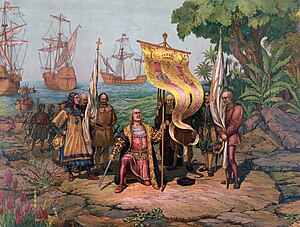:max_bytes(150000):strip_icc()/2503957185_63b53b420d_b-5c454c9746e0fb0001c05677.jpg) |
| Cuban Revolution graphic |
 |
| English settlers in Dominica |
In Little Cog-Burt the setting is Dominica, and from context clues the reader can infer it was set sometime in the 1800's. This is a century before the Cuban Revolution. Aside from the history of the two passages the contrasting parts of these stories run even deeper. The main characters although both female represent two different spectrums of life in the Caribbean. Lola from Cotton Candy, signified the Cuban working class, as she endured her share of economic struggles having to work day to day. Moira did not face those same struggles in Dominica. Moira believed herself to be better than her laborers. Part of which was due to the fact they were Dominican and she was European. This brings another difference between the stories; Lola was a born citizen of the country in which her story takes place and she was content with that. Moira was not a born citizen and her ill feelings toward Dominicans reflected in her language about them."I won't give a party for those dark children" ( p 7 Little Cog-Burt), is an example in the text of how distasteful she is of Dominicans. Moira was very prideful of herself and her image, where as Lola was not. In Cotton Candy, Lola struggled with herself because of the absence of a "love life" while Moira was married with a devoted husband.
The authors highlight two different view points of the Caribbean. Cotton Candy shows life in the nation of Cuba through a Cuban, while Little Cog-Burt shows Dominica through the eyes of a foreigner. But in both cases the main character Moira and Lola were marginalized. These characters are different from the rest of society in their area and have their own story. These authors also used their stories to showed motherly influence in the Caribbean. Lola's mother could be seen as strict and over protective, which could exemplify the parenting lifestyle in Cuba. In Little Cog-Burt, Ma'am Jovey was distant and didn't excessively control her child. She gave cog-burt independence. Each writer could be showcasing what parenting was like in those specific times. A parent in the 1800's is not the same as a parent in the 1900's no matter what nation or nationality. Even though both stories have their very own distinct message, they both end with the happily ever after. Lola finally meets a lover, and Moira gives the doll to a child who appreciates it. I believe when comparing these stories the reader can infer that life in Caribbean no matter the situation, will always works out in some way.




